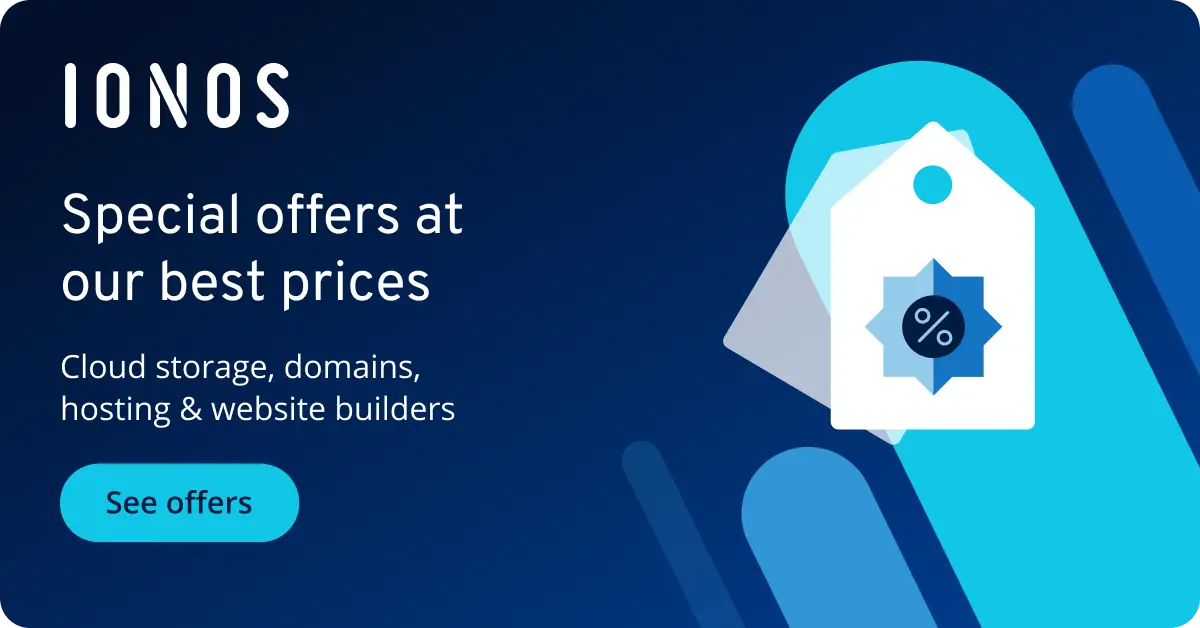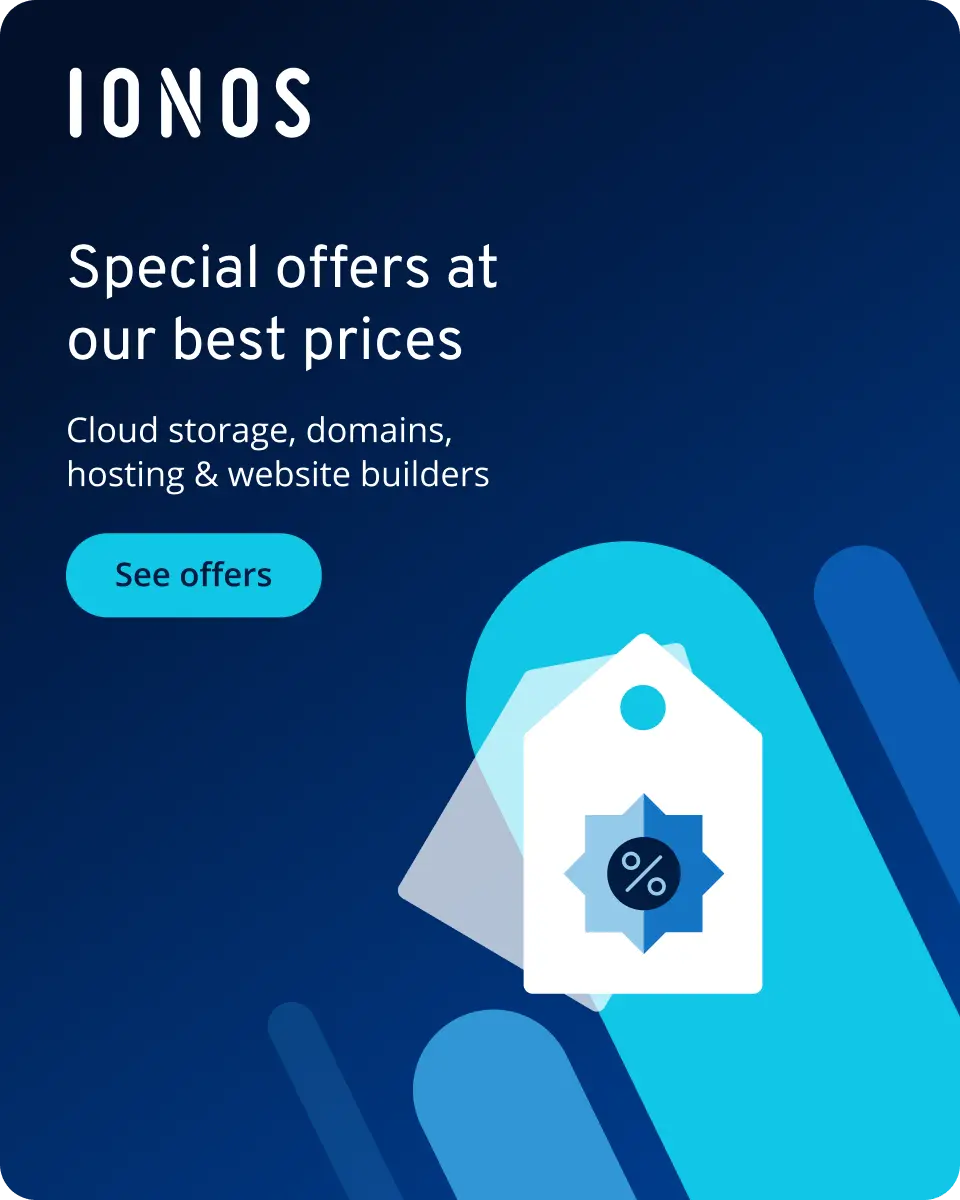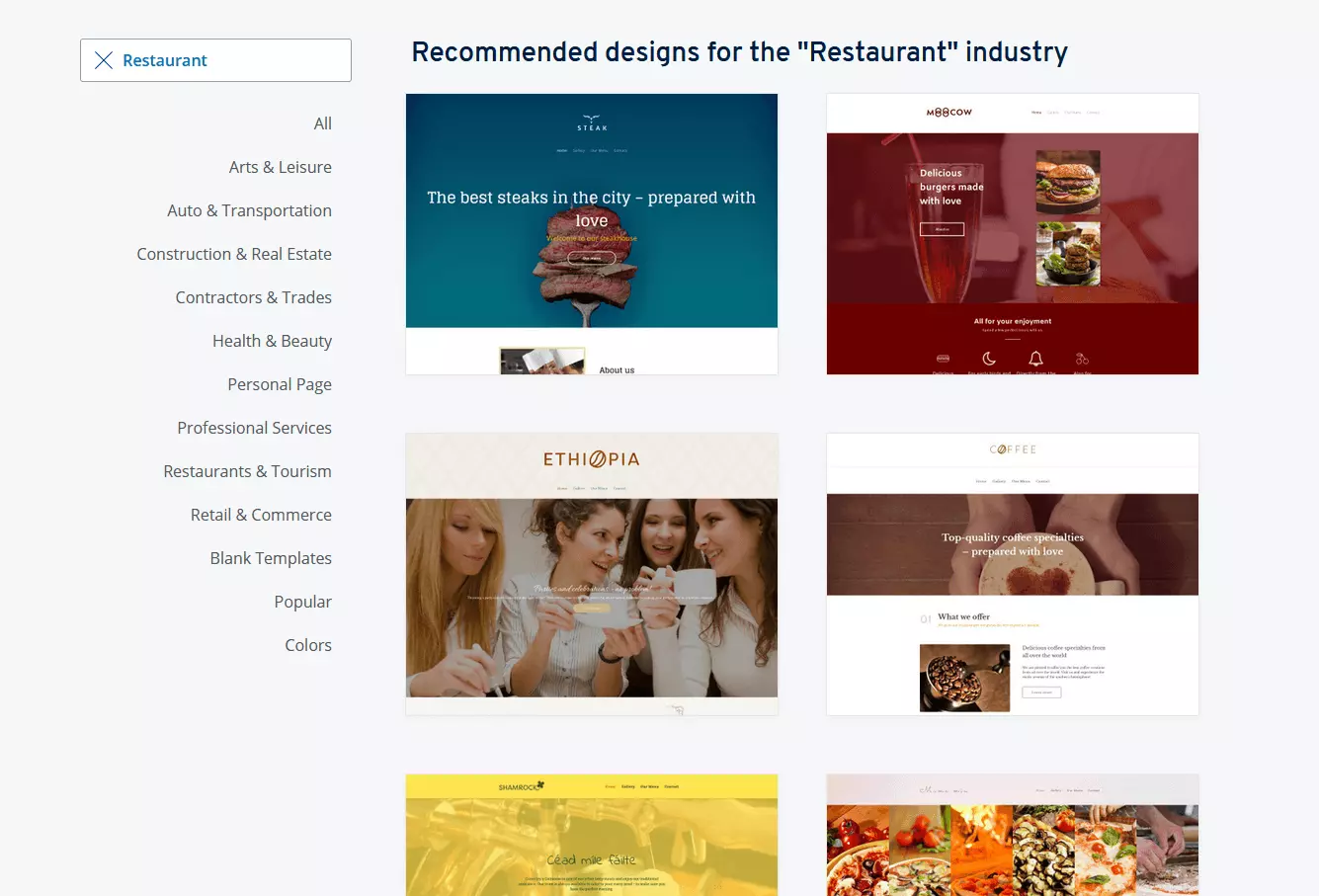How to create a Restaurant Website
A business – irrespective of industry – rarely can get away with not having a dedicated homepage these days. A web presence ensures that existing customers can stay in the know and potential new ones can find you and your product and service offers quickly. But each industry has different needs. That’s why your restaurant website shouldn’t just be a copy of traditional retail business pages. But where do you start when you’re building a restaurant website?
What are the advantages of having a homepage for your restaurant?
Many diners prefer to check out a restaurant menu before they visit an establishment. What’s the cuisine? What’s the price range? Does the ambience match their mood? An effective restaurant website can therefore make it easier for visitors to find the right restaurant.
Having your own website can also help entice potential customers to consider your restaurant in the first place. Those looking for a cozy dinner spot or a place to fetch a snack for in between, often turn to search engines. When you’ve built your website according to SEO guidelines, you can count on new customers checking in. By including a helpful route description, you can rest assured that new customers can easily find you.
Of course, the hospitality industry’s main business continues to take place on-site, but a good restaurant website will make it easier for you to expand your business. For example, customers increasingly prefer to use online reservation systems to book their table for an evening out. Eateries that also offer takeaway or delivery services can add an interactive menu to their homepage through which customers can order directly.
Websites are essential for many other industries too, including:
Coronavirus: why having a restaurant website is now even more important
The restaurant industry was one of the industries hit hardest by the coronavirus pandemic. While other industries managed to transition into the home office, few such options were available for the hospitality sector. But restaurants can use a restaurant website builder to remain accessible to their guests. Food service providers which offer takeaway options should make sure that these options are mentioned on their website. An interactive ordering system for takeaway or delivery entices visitors to indulge despite lockdowns.
Even without a dedicated system to order through, a restaurant website can be useful during times of the coronavirus pandemic. Use your blog (perhaps in combination with social media) to inform customers of the current state of your business and stay in touch with loyal and frequent guests.
As a dependable digital partner, IONOS is here to support you and your restaurant business during the Covid-19-pandemic. On our special information page you can find out more about our support services that could help you during these challenging times.
- Get online faster with AI tools
- Fast-track growth with AI marketing
- Save time, maximise results
Build a restaurant website: what are the options?
Creating a website is easy these days and you’ll have plenty of different options to choose from. Long gone are the days when one had to have knowledge of HTML or CSS – even though this can be useful. You could either make use of different tools or hire an expert.
Content management systems (CMS)
A content management system (CMS) is a software that has been specifically created to publish content online. Using templates and plugins, it’s easy to design a website with a CMS. To create a restaurant website with WordPress, for example, requires little effort or know-how. You’ll build a restaurant homepage in no time this way. Many options are available for free. But you usually need to budget for web space and some extensions. It’s worth getting an overview and comparing different CMS options before you get started, so you can make the right decision.
If you opt for WordPress hosting by IONOS creating your website is even easier. The package provides all you need so that you can focus on the creative aspects of your website.
Website builders
A restaurant website builder is a simple-to-use online tool that allows you to create a homepage for your business in a matter of minutes. You can choose from various building blocks that can be arranged and personalised to suit your needs. Ease of use, however, comes at the expense of individuality. When you’re working with a restaurant website builder, however, you’ll be restricted to the templates the software provides.
- Intuitive website builder with AI assistance
- Create captivating images and texts in seconds
- Domain, SSL and email included
The MyWebsite homepage builder by IONOS lets you design a professional website in just a few clicks.
Web design services
Some hosting providers offer a dedicated design service in addition to basic technical services. These allow clients to draw on the help from specialists to collaborate on the design of their website based on individual client needs. You’ll neither need technical know-how nor specialist knowledge of design topics. The staff of a design service usually take care of all aspects of the website creation. You’ll just need to let them know what it is that you want, freeing up valuable time to focus on other areas of your business.
IONOS supports your website creation. The IONOS Website Design Service provides everything you need: hosting, domain, and web design.
Agencies & freelancers
Another option to get some help when designing your restaurant website are the services provided by professional web design agencies and freelancers. When you’re consulting with professionals, the sky’s the limit and you’ll have plenty of creative freedom in designing your website. Anything that’s technically possible can be realised by these specialists. Designers also ensure that the web presence of your restaurant looks neat.
What’s the best solution for building a restaurant website?
There are three things you should consider when choosing the best option for your website design: individuality, know-how, and your budget. If you prefer a highly unique website, but lack the necessary know-how, you must accept the higher costs of a specialist. If a simple yet elegant homepage suffices, you can create one using a website builder.
| Advantage | Disadvantage | Level of difficulty | Costs | |
|---|---|---|---|---|
| Content management system | Highly customisable | Hosting and domain have to be purchased additionally | Moderate to difficult | Low |
| Website builder | No technical know-how necessary | Only customisable to a certain extent | Easy to moderate | Low |
| Web design service | Often available in combination with hosting package | Changes difficult to implement later on | Easy | Moderate |
| Agencies & freelancer | Support by experts | Only recommended for large, complex projects | Easy | High |
Which elements should a restaurant website have?
The design of your restaurant homepage should match your goals. A one-pager – which can be an elegant web design solution – is often not enough for gastronomy businesses. Usually, you’ll want to include some of the following sub-pages:
- Homepage
- Menu
- Premises
- Reservation
- Ordering system
- News
- About us
- Location
- Contact
Homepage
Visitors to your website will usually come across your homepage first. This is the first impression so make it count. Show off one or two photos of dishes or the ambience inside your establishment. The homepage could also include your opening times.
Menu
The menu is what makes your restaurant stand out. A virtual menu is a recommended feature for all restaurant websites. Many eateries and bars provide their menu in .pdf format because this is easy to adapt later down the line. That’s particularly useful if you intend to change your menu regularly. But it may cause some issues when loading the website on a smartphone or tablet. Therefore, it’s recommended to integrate the menu directly into the website. If you have professional images of your dishes, you should implement them into the menu. Pictures entice the taste buds!
Premises
Guests usually don’t just come for the food, they also want to enjoy the ambience. It’s worth adding a few pictures of your premises so that potential visitors can get a better idea of what to expect. That’s even more important if your business provides party bookings. The size of the room and the number of guests you can seat could be valuable additions.
Reservation
Table reservations are useful for both restaurant owners and guests. It’s a good idea to make it as easy as possible for guests to order food. A simple-to-use reservation system on your homepage has many positives: people who already use your website can reserve a table quickly and easily. For restaurant owners, a reservation system reduces the effort required to take bookings.
A reservation system doesn’t need to be created manually. Many providers offer extensions that can be quickly integrated into your website.
Ordering system
If you provide a takeaway or delivery service, it’s worth considering a dedicated ordering system. That way, your customers won’t have to reach for the phone and can focus on browsing your menu instead. There are plenty of external services that provide extensions for your website. These software extensions usually also integrate payment and instant checkout options.
News
Something’s always happening out there, and you may want to share your latest news with your guests. Whether it’s the beginning of a new season and an updated menu or you’ve added that special wine to the wine list. News bytes are easy to share when you set up a blog. They provide a nice opportunity for your guests to peek behind the curtain and connect more closely with your business. Link your blog with your social media channels for easy and productive cross-posting of content.
About
While the focus of a restaurant website is usually the menu, it’s the staff and management that are the heart and soul of the establishment. Present your business and staff on a sub-page to lend your website a personal touch. You could add a photo of the entire team to this page.
Location
Many people turn to a restaurant web page to find its address. It’s a good idea to create a dedicated sub-page for this purpose. Here, you can provide tips on “how to find us”. This kind of information is vital when your business is in a bit of a hidden spot. Information about public transport connections is also useful, and many website visitors will appreciate it. By incorporating Google Maps, you can provide optical navigational help.
Contact
It’s important that customers can get in touch with you quickly. A separate sub-page should list various contact options. Provide your telephone number as well as email address. An interactive contact form makes getting in touch even easier. Visitors to your restaurant website just need to enter their query into the text field and hit “send”.
Step-by-step guide to building a restaurant website
Irrespective of which option you choose to create your restaurant website, an effective web presence is based on some common steps to follow – from choosing the right domain to increasing your web page’s profile.
Step 1: Score with the right domain
A domain is your business’s web address. It’s usually the first thing visitors see when accessing your restaurant homepage. That’s why choosing the right name is important. A good web domain should be easy to remember and unique. In terms of search engine optimisation, it’s worth adding your restaurant’s location to the URL. Just add a hyphen to do so or use a top-level domain like ‘.la’.
When you purchase a domain with IONOS you’ll get a free email address as well as an SSL certification. Check whether your favourite domain name is still available now!
Step 2: Go for a harmonious design
The design of your website should match that of your restaurant. If your locale’s interior is minimalistic, your online presence could emulate that. If in contrast your establishment is more rustic, this should be visible on the website. But a website isn’t the same as interior design. There are different rules to consider. When it comes to user-centered design the user experience is the focus. The user should be able to view their desired information easily and intuitively. This type of web design means that websites can be accessed on a mobile device just as easily as on a PC or laptop.
If you decide to design your own web page, you won’t have to start from scratch. Web builders and WordPress provide plenty of templates. Some templates and themes are designed specifically for restaurant homepages.
The various design templates by IONOS can be applied to restaurant websites. Get inspired by the design and content of templates!
Step 3: Add content to your restaurant website
The right design ensures that the focus of your website – the content – remains in the foreground. Text and images are at the heart of your online presence. It’s why guests visit your website after all. So take your time here. You should create content which has the following features:
- Informative: Generally, website visitors will be looking for specific information. Make sure this is highlighted and is in the foreground. Don’t hide information behind lengthy text chunks. Usually, less is more here!
- Current: Should your opening times change or you’re adapting the menu, make sure that this information is added online promptly. Otherwise, it could lead to misunderstandings.
- Organised: Watch out for spelling and grammar mistakes in your text and ensure that images are well-placed across the website. Spelling mistakes can seem unprofessional and could be a bad look for your company.
- Helpful: Consider helpful features like interactive maps or a reservation form. It leaves a positive impression with guests even before they visit your restaurant.
Step 4: Publish and market your restaurant website
In the best-case scenario, your web presence can win over new guests for your business. To publicise your website, it should be adjusted for search engine optimisation (SEO). Various factors can influence whether your website can be found by Google and other search engines:
- Keywords: Add important keywords to your website. This could include the type of cuisine you serve (e.g. ‘Italian’, ‘local’, ‘fine dining’) and the location of your restaurant (e.g. ‘London’, ‘Newcastle’, ‘Cardiff’).
- Performance: Make sure your website loads quickly and displays just as well on mobile devices (smartphones and tablets).
- Local SEO: Google provides the option to create a profile directly on the search engine. The service knows where your restaurant is located and can inform people searching for it accordingly.
- Social media: Create a social media profile and link your website to it. This way, you can win over additional guests and more easily stay in touch.
- Website ratings: Add reviews from other platforms to your website. Google integrates these points and star ratings into its search results.
With our RankingCoach from IONOS, you can quickly detect weaknesses in your SEO strategy.


